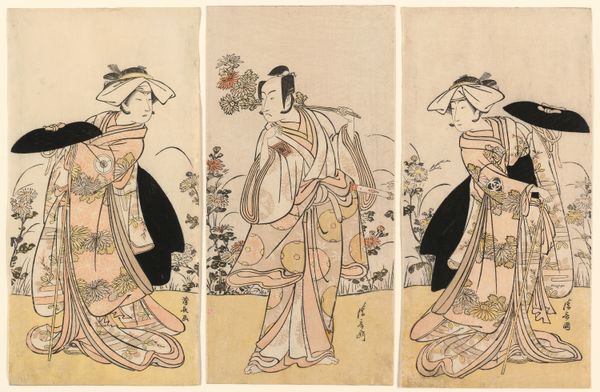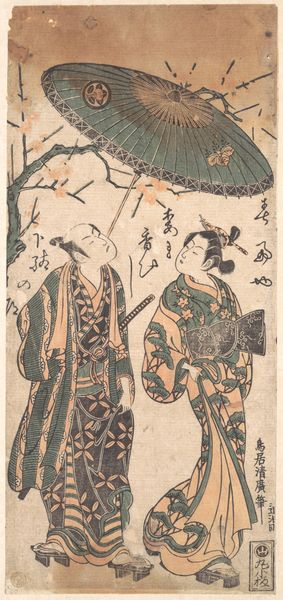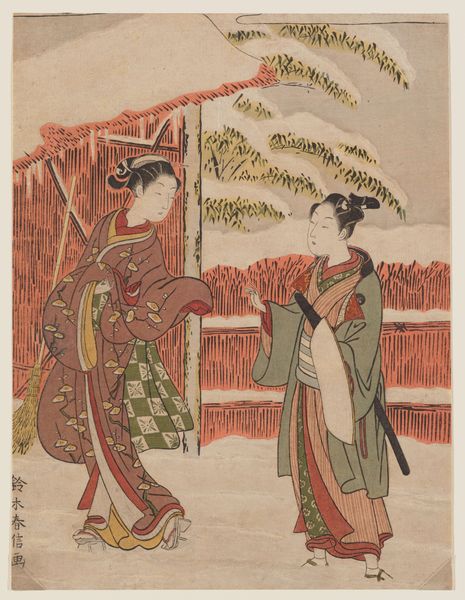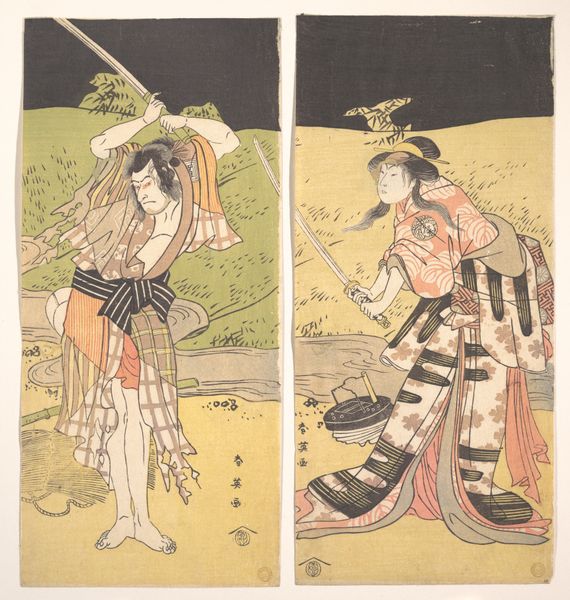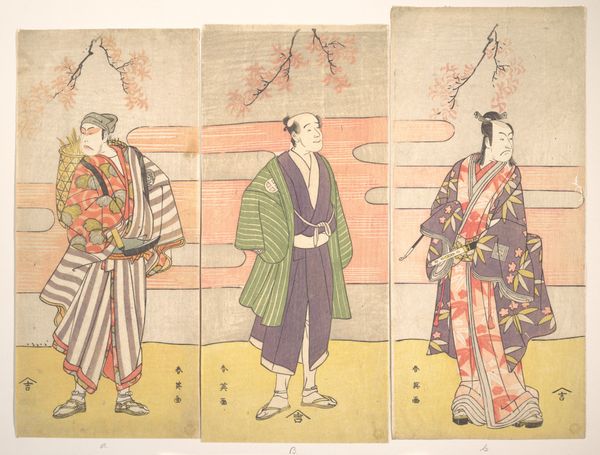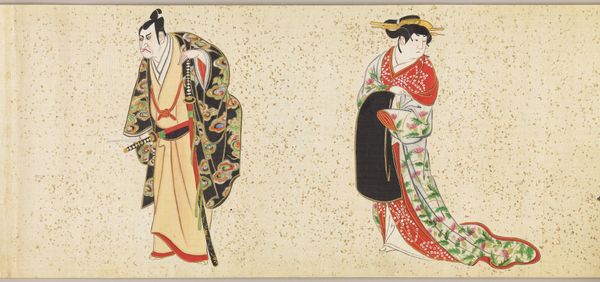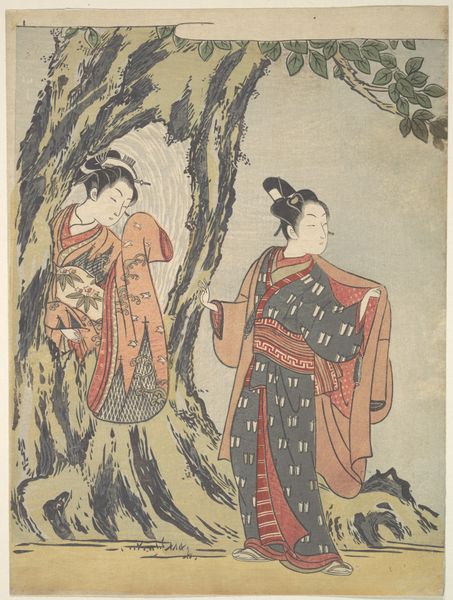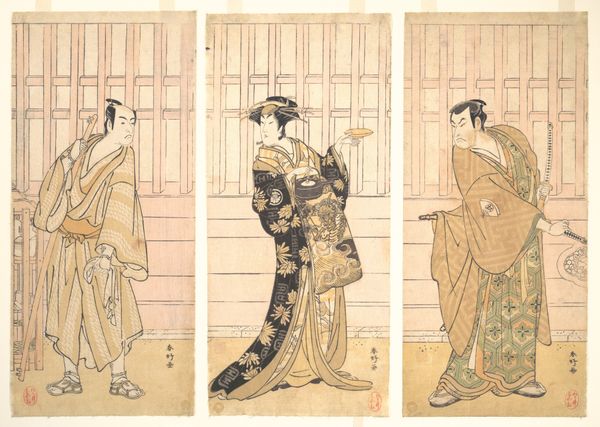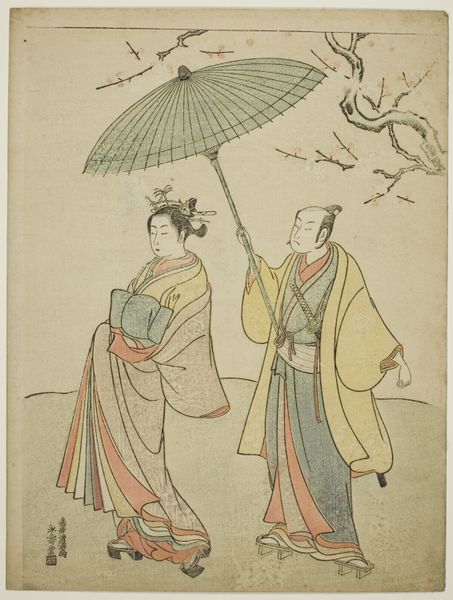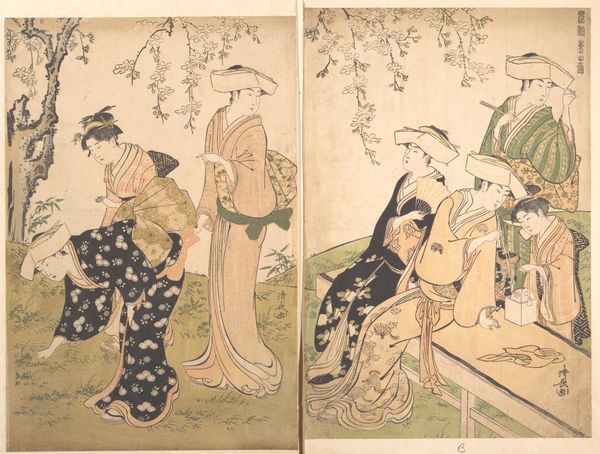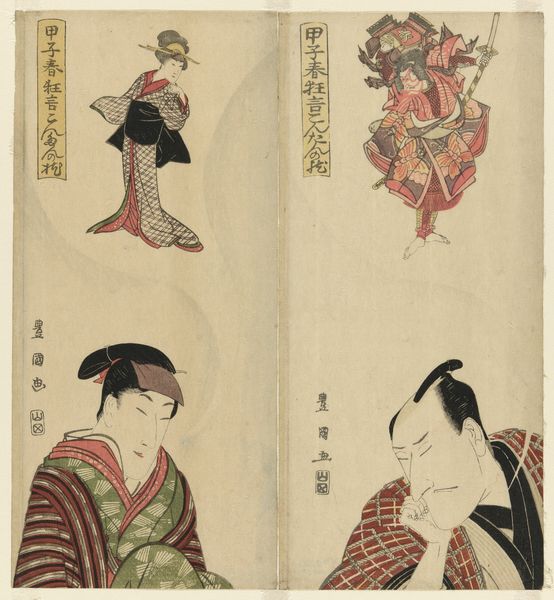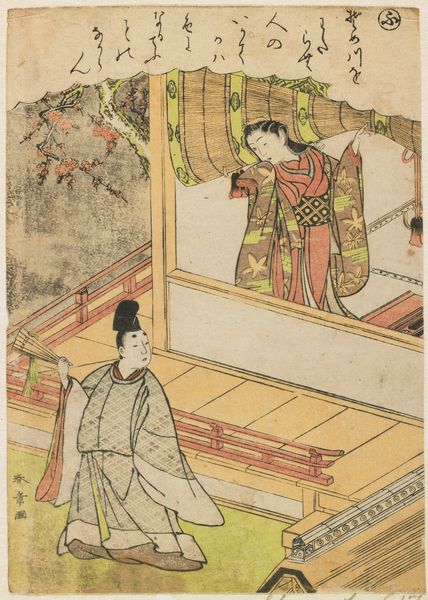
The Actor Morita Kanya Wearing One Sword 1782 - 1802
0:00
0:00
print, woodblock-print
#
portrait
# print
#
asian-art
#
ukiyo-e
#
figuration
#
woodblock-print
#
genre-painting
Dimensions: A: H. 12 13/16 (32.5 cm); W. 5 11/16 in. (14.4 cm) B: H. 13 in. (33 cm); W. 5 3/4 in. (14.6 cm)
Copyright: Public Domain
Curator: Katsukawa Shun'ei’s diptych, made between 1782 and 1802, features the actor Morita Kanya. As a woodblock print from the Ukiyo-e school, it exemplifies popular art made for the merchant class. Editor: What immediately strikes me is the contrast—two figures, almost mirror images, yet distinct in posture and presentation, suspended beneath a flowering branch. It’s melancholic, like fleeting beauty. Curator: These prints capture Kanya playing both a male and female role on stage. Consider the cultural context: Kabuki theatre, initially performed by women, was later banned, leading to men playing female roles, known as Onnagata. The woodblock prints then commercialize actors, making theater accessible to a wider public, functioning as both advertisements and collectibles. Editor: Note how Kanya as a male is depicted with sharp, angular lines, emphasizing strength and defiance in his gaze, juxtaposed against the soft, flowing lines and delicate colors representing him as a woman, an iconographic strategy reflecting idealized femininity of the time. This contrast highlights the artifice inherent in both genders. Curator: Right, and the choice of the cherry blossom isn't arbitrary; it is meant to symbolize the transient nature of life, connecting with the fleeting performances on stage and celebrity culture, and thus commenting on social norms and anxieties about shifting social hierarchies. The success of Kabuki challenges the prevailing Edo-period social structure where merchants hold low social standing yet the theater gives them agency. Editor: The sword in the first image is obviously symbolic too; less of a weapon, more of a prop, standing in as a phallic representation. And in the second image, a covered fan shields half the actor's face, concealing just as much as it reveals. Both create meaning within a well understood repertoire of motifs. Curator: Ultimately, the work makes celebrity idols out of its performers. We can understand Kanya’s status from these popular woodblock prints, circulated and collected throughout the city—something quite new in this historical moment. Editor: In the end, it’s a clever play on duality – man and woman, performer and person, permanence and transience– echoing, perhaps, the ephemeral nature of both theatre and life itself.
Comments
No comments
Be the first to comment and join the conversation on the ultimate creative platform.
